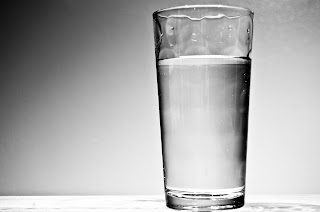A glass of clean drinking water contains 10 million ‘good’ bacteria, which may help purify the water and keep it safe, a new study has claimed. Researchers have found that our drinking water is to a large extent purified by millions of “good bacteria” found in water pipes and purification plants. So far, the knowledge about them has been practically non-existent, researchers said. A glass of clean drinking water actually contains 10 million bacteria. But that is how it should be — clean tap water always contains harmless bacteria, researchers said.
Researchers discovered that a glass of water contains 10 million bacteria. It is good to know that there is a way to improve the quality of the water, Recently Researchers from Lunch University in Sweden found that these microscopic bacteria will grow inside the water pipes of Water treatment plant which looks in the form of a thin, sticky coating – a so-called biofilm. Experts are saying clean drinking water has 10 million bacteria, clean tap water has harmless bacteria,
These bacteria and other microbes grow in the drinking water treatment plant and on the inside of our water pipes, which can be seen in the form of a thin, sticky coating — a so-called biofilm. All surfaces from the raw water intake to the tap are covered in this biofilm. These findings show that the diversity of species of bacteria in water pipes is huge, and that bacteria may play a larger role than previously thought. Among other things, the researchers suspect that a large part of water purification takes place in the pipes and not only in water purification plants. “A previously completely unknown ecosystem has revealed itself to us. Formerly, you could hardly see any bacteria at all and now, thanks to techniques such as massive DNA sequencing and flow cytometry, we suddenly see eighty thousand bacteria per millilitre in drinking water,” said Catherine Paul from Lund University in Sweden. At least a couple of thousand different species live in the water pipes.
According to the researchers there is a connection between the composition of bacteria and water quality. “We suspect there are ‘good’ bacteria that help purify the water and keep it safe – similar to what happens in our bodies. Our intestines are full of bacteria, and most of the time when we are healthy, they help us digest our food and fight illness,” said Paul. Although the research was conducted in southern Sweden, bacteria and biofilms are found all over the world, in plumbing, taps and water pipes. This knowledge will be very useful for countries when updating and improving their water pipe systems, researchers said. “The hope is that we eventually may be able to control the composition and quality of water in the water supply to steer the growth of ‘good’ bacteria that can help purify the water even more efficiently than today,” said Paul. The research was published in the journal Microbes and Environments.
Catherine Paul from Lund University in Sweden added, ” A previously completely unknown ecosystem has revealed itself to us. Formerly, you could hardly see any bacteria at all and now, thanks to techniques such as massive DNA sequencing and flow cytometry, we suddenly see eighty thousand bacteria per milliliter in drinking water.”
In the research it was found that at least two thousand different species will live in the water pipes. But researchers are saying that there is a link between the water quality and bacteria.
Paul is saying that, ” We suspect there are ‘good’ bacteria that help purify the water and keep it safe – similar to what happens in our bodies. Our intestines are full of bacteria, and most of the time when we are healthy, they help us digest our food and fight illness.”
So researchers are saying that keeping in mind about this bacteria go for the development of the water purifiers or water treatment plants across the world.
Finally, Paul mentioned in a statement, “The hope is that we eventually may be able to control the composition and quality of water in the water supply to steer the growth of ‘good’ bacteria that can help purify the water even more efficiently than today.”


No comments:
Post a Comment